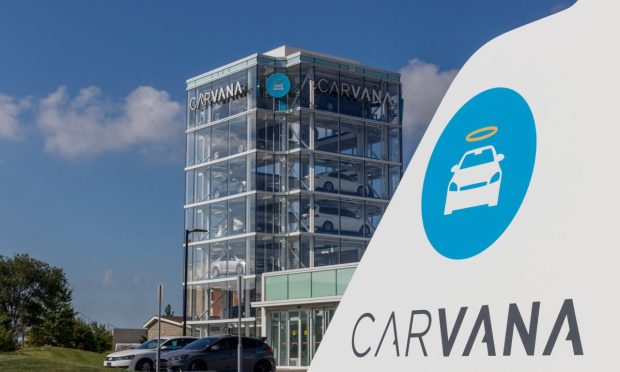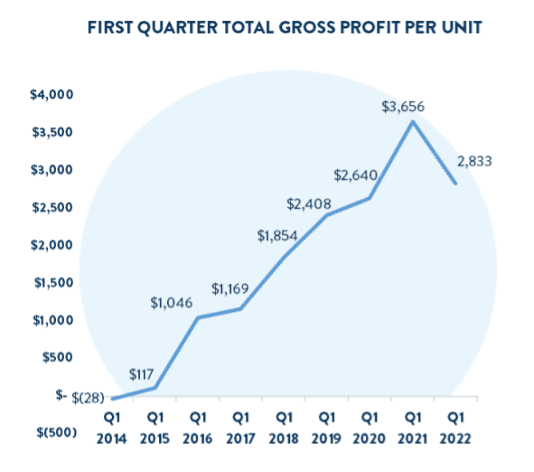Carvana Crashes Into ‘Challenging, Difficult, Deteriorating’ Environment

For a company whose stock had already fallen 70% in the past eight months, it would be hard to say Carvana investors were caught by surprise when the online used car retailer known for its “vending machine” delivery towers announced its first-quarter earnings results Wednesday afternoon (April 20).
And yet, a perfect storm of both internal production delays and external macroeconomic factors combined to deliver what the 10-year-old Arizona-based company referred to as a challenging, uniquely difficult and deteriorating quarter for the buying, selling, financing and delivery of secondhand vehicles.
“It looked like the industry environment was deteriorating throughout is I think probably the simplest way to characterize it,” Carvana Chairman and CEO Ernie Garcia told investors and analysts on the company’s earnings call, pointing to a mix of rising interest rates, inflation, winter storms and record high used car prices.
While the retailer’s year on year comparisons were still mostly positive, its sequential retreat from a peak set in Q4 is perhaps a better indication of the impact that it and the broader auto industry are facing at the moment.

Those trend reversals include an unprecedented 7% Q/Q drop in the number of units sold in the first three months of 2022, as well as a previously unseen decline in the company’s gross profit per unit (GPU), which fell 22% to $2,833 from over $3,600 at the end of last year.
At the same time, the rapidly expanding retailer said it experienced unexpected bottlenecks at its inspection and reconditioning centers, as well as uncharacteristically high delivery delays and order cancellations.
“Difficult environments sharpen us. They reveal our weaknesses and force new perspectives. In that way, they present new opportunities. This environment is no different,” Garcia told his fellow shareholders, while also choosing not to issue guidance at the moment.
A Solution With Dilution
To that point, Garcia said the company’s previous expectation that it would hit $4,000 GPU was being “pushed back a few quarters” but that its planned acquisition of ADESA U.S. was expected to be completed next month, a deal that will add 56 locations and 6.5 million square feet of space and over 4,000 acres of land to Carvana’s existing portfolio.
“Adding the ADESA U.S. footprint will dramatically improve our logistics network over time,” CFO Mark Jenkins said, noting that it planned to add 2 million units of additional annual reconditioning capacity into the new locations, a move that would eventually see Carvana have reconditioned inventory within 50 miles of 58% of the U.S. population and within 200 miles of 94%.
To facilitate this deal, and to give Carvana working capital, the company said it was also looking to raise $2 billion via two separate stock offerings, or the equivalent of roughly 12% of its current market value.
Despite the obvious dilution this presents to existing shareholders who have already taken a 60% haircut year to date, Jenkins said the financing transactions would give Carvana its strongest total liquidity and production capacity ever.